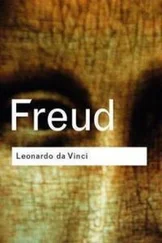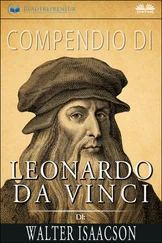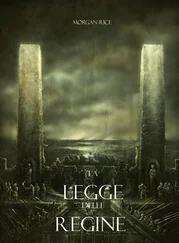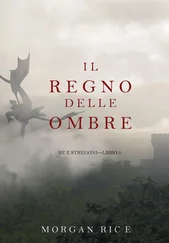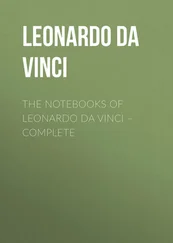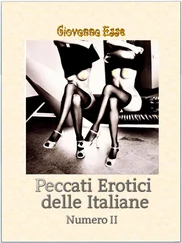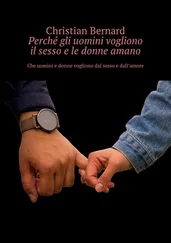The career of Leonardo's father, Piero, was marked by his family tradition. In fact, he wanted to assert himself at all costs as a notary in the rich Florence where business was booming. For this reason, good notaries were in great demand, guaranteeing a certain order in financial and commercial conduct in a rapidly expanding city. The great leap in Piero da Vinci's career came when he was recommended to the Medici family in Florence. He seized the opportunity right away, proving to be punctilious and brilliant. In a short time, the Medici family became one of his best clients, but he also worked for the powerful ducal family of the Gonzaga family of Mantua. According to the documents, he soon moved into a house near Piazza della Signoria in 1469, near the political and commercial heart of the city. Piero da Vinci's dream came true suddenly, becoming one of the most respected notaries in the city of Florence. His notarial deeds, which ended with his death in 1504, are now preserved in the State Archives of Florence and are valuable testimonies of his time.
At first, however, Piero da Vinci was not very lucky in his private and family life. After the "premarital offence", he married Giovanni Amadori's 16-year-old daughter Albiera shortly after the birth of Leonardo. But this marriage was childless and his young wife died in 1464 - after a marriage of twelve years - at the age of only 28 years. After the premature death of his first wife Piero da Vinci married his second wife, the fifteen-year-old Francesca di ser Giuliano Manfredini, but she too died prematurely. She too was unable to give Piero da Vinci a legitimate heir. Only Piero's third wife, Margherita di Francesco di Jacopo di Guglielmo, whom Piero da Vinci married in 1475, 23 years after Leonardo's birth, gave him six children, including the desired son. But she too died prematurely. Piero's fourth wife, Francesca Lanfredini, gave the now famous notary, who is described in the chronicles as an art lover, six more children. The last son was born when Leonardo was 46 years old. Leonardo had a total of 12 half-brothers and stepsisters. Their names were: Antonio (1476), Maddalena (1477), Giuliano (1479), Lorenzo (1484), Violante (1485), Domenico (1486), Margherita (1491), Benedetto (1492), Pandolfo (1494), Guglielmo (1496), Bartolomeo (1497), Giovanni (1498).
Leonardo's mother, Caterina, married with the help of the old Antonio da Vinci Andrea di Giovanni di Buti who produced ceramics. He had the reputation of being a drunkard who had the nickname "Attaccabriga", as a troublemaker because he magically attracted the misfortune because of his impulsive character and his impetuous nature. Catherine had 9 other children with him. It is assumed that Leonardo's grandfather, Antonio da Vinci, provided Catherine with a modest dowry to marry her to "Attaccabriga". Only the names and dates of birth of five of Catherine's children born from her marriage to the humble potter are known: Piera (1454), Maria (1457), Lisabetta (1459), Francesco (1461) and Sandra (1463).
Leonardo spent the first five years of his childhood at his mother's house in Anchiano. These fundamental years for his training were spent with an irascible stepfather and must have been a hell for Leonardo. When the situation became unbearable and the mother gave birth to her second child with her new husband, her grandfather Antonio finally brought his grandson "Leonardo" to his home in Vinci. In addition to her grandparents Antonio and Lucia, she also lived here with her uncle Francesco, who became of fundamental importance to Leonardo, from whom she learned her passionate love for nature. His grandfather also taught him how to read and write,
exploring with him Mount Montalbano and showing him how to make majolica. Leonardo Lucia's grandmother ran a majolica factory in Vinci.
His paternal grandparents took care of his illegitimate grandson. It is clear from an official note by Antonio da Vinci. In a document dated 1457, his grandfather formally stated that Leonardo lived with him. Only a year later, in 1458, his grandfather died at the age of 96. It seemed that Leonardo had given him much pleasure until his death, especially as he was the only grandson at that time. That is why his grandfather explicitly listed him as an heir. He also considered his grandmother Lucia, his father Piero, his new stepmother Francesca Lanfredini, his uncle Francesco and his aunt Alessandra.
Leonardo's father, Piero, began his profession as a notary in Florence in 1459. Previously he had worked as a notary in Pisa and Pistoia. His only son for the time lived with him in Florence and Vinci, where his grandmother Lucia continued to take care of his majolica workshop despite his advanced age, until his death in 1469. During this period Leonardo did not receive the necessary classical training. At that time, in fact, the children of the city's bourgeoisie were taught grammar, mathematics and above all Italian Latin at the age of seven. Leonardo did not receive this training also because he was considered an illegitimate son. Instead, he could give space to his imagination in the workshop of his uncle Francesco, preparing himself for life through his practical experience. This is why Leonardo was unable to write and speak Latin throughout his life, provoking the ironic criticism of many contemporaries and rivals. Leonardo actually obtained his basic knowledge in Vinci from his grandfather Antonio, his uncle Francesco and from the priest Piero who had also baptized him. In this environment he was able to live in complete freedom and without any kind of constraint, learning the basic principles of life. Leonardo was allowed, for example, to write with his left hand, although it was generally considered the hand of the devil. He could also use mirror writing: from right to left, because it was more practical for a left-handed person.
Without the knowledge of Latin, which would have been the prerequisite for studying law, Leonardo could not follow in his father's footsteps. Instead, his father Piero had him instructed in arithmetic with the abacus - a simple mechanical calculus tool that Leonardo mastered in a very short time. The exercise of calculation with the abacus could be interpreted as an indication that Leonardo, according to the will of his father or grandfather, should have entered the business of money, which flourished magnificently in Florence as in no other city in Italy. The abacus was part of the equipment of every bank in Florence. But Leonardo soon demonstrated his extraordinary intelligence. He always liked to embarrass and confuse his teachers with constant questions. Leonardo lived in the family of his grandfather at least until the age of 13. Already at the age of fourteen, it is reported in some documents, he began to work hard in the workshop of the artist Andrea del Verrocchio in Florence. Probably he had previously worked for a short period in the same workshop for a short period, as was then customary before being finally hired.
The fact that Leonardo could not write and speak Latin did not make much difference to the Florence of the people and craftsmen. On the contrary, the three great Tuscan poets and writers Dante Alighieri, Francesco Petrarca and Giovanni Boccaccio had demonstrated in an impressive way with their Divina Commedia, the perfect sonnet poem by Canzoniere, and the magnificent collection of novels Decameron, that the Florentine language spoken and written in the city, called Volgare, had all the characteristics to become the language of Italian culture and literature, quickly demonstrating its value and soon establishing itself as the language of art and culture. Through the diffusion of written Florentine works of the literary triumvirate Dante, Petrarca and Boccaccio, the awareness of national unity based on common cultural values developed throughout the country. As a political entity, Italy did not exist, but culturally the feeling of being a national unity prevailed. Moreover, it was no longer necessary to write in Latin to narrate the universal themes of man. It could also be done using the vulgar Florentine language. The whole peninsula was a conglomerate of states and small states independent of each other. However, it was only in the nineteenth century that the Florentine language was finally accepted as the official language of the whole of Italy, putting an end to a long-standing dispute over the language.
Читать дальше

